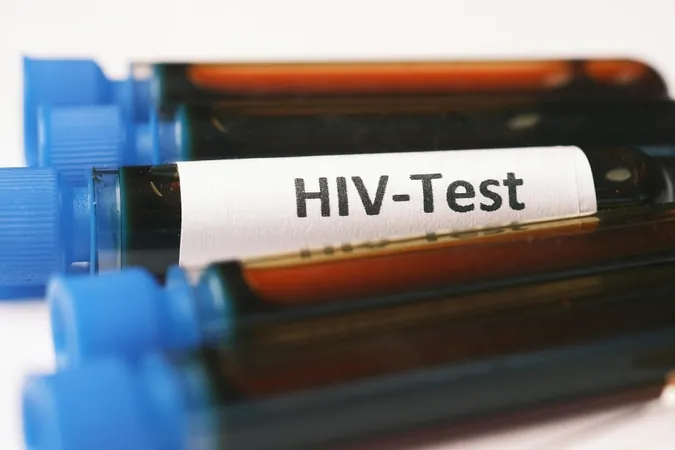
Dramatic Decline in HIV Cases and Deaths – But Is the Fight Over?
2024-11-26
Author: Li
A Turning Tide in the Global Epidemic
The findings, featured in a comprehensive study by The Lancet HIV, reveal that during the past decade, the global rate of new HIV infections has dropped by 20%. Likewise, deaths associated with HIV-related complications have plummeted by nearly 40%, falling below one million annually. This progress has been driven predominantly by notable improvements in sub-Saharan Africa, which has been the epicenter of the epidemic for years.
However, the report highlights stark regional disparities; areas like Eastern Europe and the Middle East have seen a troubling increase in HIV cases, emphasizing the unequal nature of this global health crisis. The researchers pointed out that achieving the United Nations' aspirational goal of virtually eliminating Aids-related deaths by 2030 remains a significant challenge, as more than one million individuals continue to contract HIV each year.
“The world has made remarkable global progress to significantly reduce the number of new HIV infections,” stated Hmwe Kyu, the lead author from the US-based Institute for Health Metrics and Evaluation. “Yet, among the 40 million people living with HIV, a startling quarter is not receiving the treatment they urgently need.”
Innovative Strategies in HIV Prevention
One of the most effective breakthroughs in HIV prevention has been the introduction of Pre-Exposure Prophylaxis (PrEP) pills, which can lower the risk of infection through sexual contact by an impressive 99%. In countries like France, health advocates are pushing for wider access to PrEP, aspiring to ensure that anyone at risk can benefit from this preventive treatment.
For those already living with HIV, advancements in antiretroviral therapy have made it possible to reduce the virus to undetectable levels in the bloodstream. According to the U.S. Centers for Disease Control and Prevention, this renders the likelihood of transmission to breastfeeding infants virtually nonexistent.
A Game-Changing HIV Treatment on the Horizon
In addition to these preventative measures, hope surrounds the new antiretroviral drug lenacapavir. Early trials reveal it to be 100% effective in blocking HIV infection, and its administration is simplified through biannual injections, contrasting the daily regimen of current treatments. While the pharmaceutical company Gilead currently prices lenacapavir at approximately USD 40,000 per person annually, advocates argue that it could be produced for as low as USD 40 – advocating for broader access in economically challenged regions.
In October 2024, Gilead announced partnerships with six generic drug manufacturers to produce lenacapavir for low-income countries. However, critics point out that millions of individuals with HIV live in regions not covered by these agreements, reiterating the looming threat of disparity.
Furthermore, the stigma associated with HIV poses an additional barrier to treatment access, and lenacapavir's less frequent dosing regimen could help alleviate this issue.
The Pursuit of an HIV Vaccine Continues
Despite progress, the elusive quest for an HIV vaccine persists. Dr. Andrew Hill from Liverpool University has likened the lenacapavir injection to a vaccine in its preventative potential. Additionally, a few patients have reportedly achieved remission after undergoing rigorous stem cell transplants for leukemia, but this is an impractical solution for the vast majority.
As the global community gears up for a day of remembrance and awareness on December 1, the mixed bag of progress and ongoing challenges reminds us that while we have made incredible strides, much remains to be done in the fight against HIV/AIDS.




 Brasil (PT)
Brasil (PT)
 Canada (EN)
Canada (EN)
 Chile (ES)
Chile (ES)
 España (ES)
España (ES)
 France (FR)
France (FR)
 Hong Kong (EN)
Hong Kong (EN)
 Italia (IT)
Italia (IT)
 日本 (JA)
日本 (JA)
 Magyarország (HU)
Magyarország (HU)
 Norge (NO)
Norge (NO)
 Polska (PL)
Polska (PL)
 Schweiz (DE)
Schweiz (DE)
 Singapore (EN)
Singapore (EN)
 Sverige (SV)
Sverige (SV)
 Suomi (FI)
Suomi (FI)
 Türkiye (TR)
Türkiye (TR)